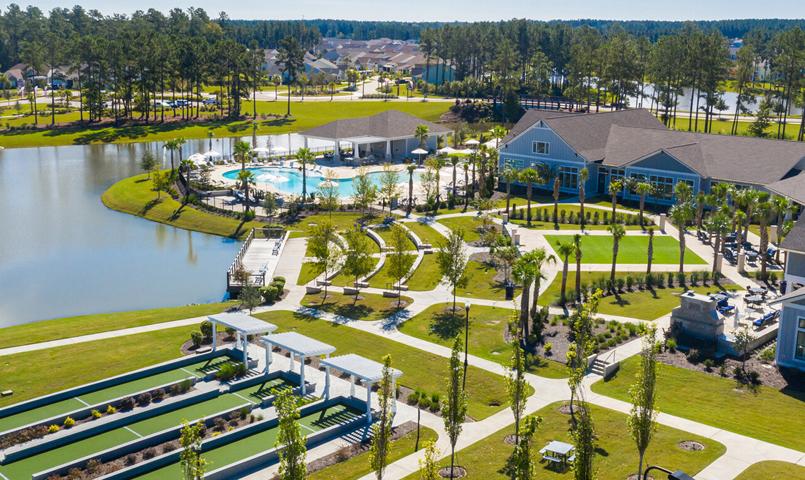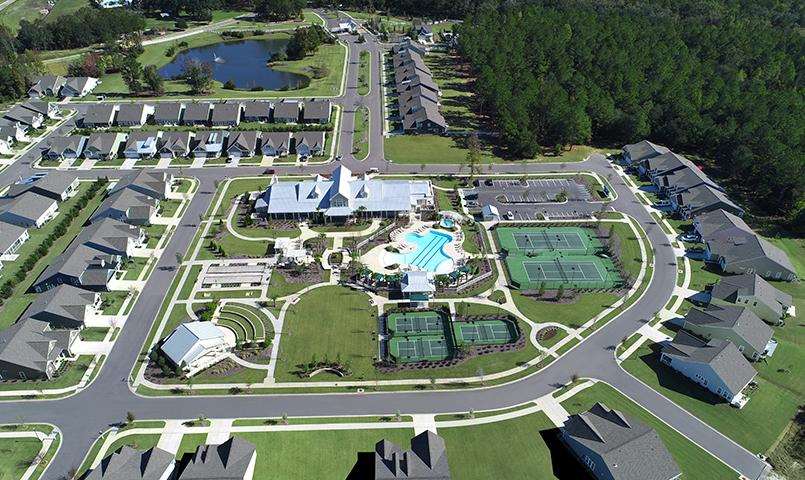by Robert Borges on October 10, 2024
Not all 55+ communities have homeowners' association (HOA) fees, but most do. The presence and amount of these fees can vary significantly depending on the specific community and the amenities offered.
Many 55+ communities are overseen by homeowners’ associations (HOAs). These associations collect monthly fees to cover the maintenance and upkeep of the exterior of buildings, common areas, and amenities available to residents. The HOA fees in 55+ communities in South Carolina may also be considerably less than those at an active-adult development in the Northeast or many parts of California.
Not only does the cost of living vary in the different locations, but HOA fees are impacted by the amount and type of amenities, age of the community, security provided, how well the grounds were maintained over the years, and a host of other factors. Rental policies in 55+ communities can be unique, but they’re largely the same as other similar policies.
Active Adult Living Is a Lifestyle Choice

If you’re fifty-five or older and ready for the next step in your life, there are planned developments that offer a broad range of activities that might just be exactly what you are looking for.
Some people fear that one of the drawbacks of 55+ living is having to slow down. Thankfully, that doesn’t have to be the case. After years of hard work, strolling down a beach, knocking around a golf course, or spending a leisurely afternoon playing mahjong or bridge with friends can be extremely appealing.
What HOA Fees Pay For
All these pleasurable activities and helpful amenities cost money. A homeowner association will prepare an annual budget detailing how they plan to spend the money they collect. Line items can range from routine expenses (landscaping, lifeguards, etc.) to major capital improvement projects like resurfacing interior roads or replacing old roofs.
How Much Are HOA Fees?
While homes in an active-living community may be maintenance-free for the resident, the property still needs to be taken care of. According to Rocket Mortgage, the average HOA fees in 55+ living communities can be up to $800 per month, though are often less than that. The amount is determined by the annual budget plus any special assessments, and the total expenses are divided by the number of units in the development. Larger homes generally pay more in monthly fees than smaller units.
In addition, ask about the school property tax in 55+ communities you’re considering. This needs to be included in your budget when evaluating your options.
How to Find the Right Place to Live

Private Communities is a premier source for the information you need to make an informed decision about where and how to live in your later years. Going back to the example of South Carolina, we provide details on more than 50 communities you can peruse at your convenience.
Many seniors are attracted to the Palmetto State for its lower cost of living (6% lower than the national average, with housing at approximately 20% less), as well as its rich history, natural beauty, and warm hospitality. The amenities in these communities range from access to pristine beaches and world-class golf courses to vistas of the Blue Ridge Mountains and horseback riding opportunities for equestrian enthusiasts.
Making the Most of It
If you live in a planned development, homeowner fees are necessary to ensure the upkeep and maintenance of the property. Homes and communal buildings need to be repainted or reroofed from time to time, and the more amenities offered, the higher the monthly fees will be. If there are excess funds, this money may be put into a contingency account to cover unexpected expenses, such as a broken pipe in the clubhouse, trees knocked down by a storm, or excess snow removal.
When evaluating where to live, find out what the HOA fees are and if there are any special assessments planned. This will help you determine how HOA fees will impact your budget and standard of living!
